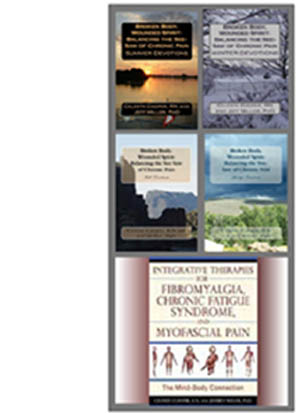To
kick off this interview, I asked Dr. Hurst-Wicker this predominant question
among the scientific community,
Is
Chronic Pain a Disease?
Here
is what Dr. Hurst-Wicker had to say.
Pain
is a symptom of some other underlying problem, much like a runny nose is a
symptom of a cold or allergies. The key to solving a problem is identifying the
problem and figuring out how to fix it. If we invest all our time and energies
in treating only the symptom, pain, without diagnosing the cause, we risk missing
the chance to fix the problem and remove the symptom. We miss the opportunity
to get the patient the right treatment, right away.
People
experience chronic
pain for many reasons, and many patients can be treated with injections, medication,
surgery, or other modalities. The tough thing for both patients and physicians
is realizing that human bodies are complex organisms. We are in the process of
learning and understanding this intricate machine, but we don’t have all the
answers to the problems we face readily available. This means that for some
patients pain could be caused by something we don’t fully understand and
therefore don’t have great treatments. Eventually we will get there. But if we
started saying, “Oh, the problem is just chronic pain and we need to treat only
the pain,” we’d miss the opportunity to find real causes, and we would miss
opportunities to develop treatments that could truly help people, instead of only
masking the symptoms.
Q. How important is
a history and physical?
Take
chronic myofascial pain as an example. Myofascial pain
syndrome (MPS) is a common cause of chronic pain. It can be the primary
peripheral pain generator and at the same time, it may flare up as an indicator
of other pain generator in the same area. That’s why a big part of evaluating a
patient with pain is getting a good history and physical exam.
Q. Why does pain
become chronic in some people and not others?
The
transition from acute to chronic pain has a variety of contributing factors.
Sometimes the problem is that the underlying problem can’t be fixed, like a bad
joint that can’t be replaced because the patient is too sick for surgery. In
other cases, people can develop the changes to central
sensitization thus perpetuating pain even after the initial problem is
fixed.
Some
studies indicate genetic factors play a role and may explain why some people experience
chronic pain and others don’t, and other studies indicate certain pain medications
could initiate the process of central sensitization.
I’m
not sure we will ever develop a quick or simple way to figure out what patient will
develop or experience chronic pain. There are many factors at play and I think
it is too complex to determine right away. But, we continue to learn more year
after year.
Q. Are there other
factors that contribute to chronic pain?
 |
| MRI of amygdala and hippocampus |
Stress
and sleep can certainly have an effect on pain. Stress alone can change the
levels of neurological hormones in our central nervous system and thus, amplify
chronic pain. We discussed a study in a separate interview on centralization in
fibromyalgia. In this
study, they used the MRI to evaluate the size of the hippocampus in fibromyalgia patients [the region of the brain responsible for with memory and spatial
navigation]. One of the things they discussed was whether the hippocampus was
small due to the stress of chronic pain in fibromyalgia, or if patients maybe had higher
stress levels that shrunk their hippocampus and thus got fibromyalgia. Sleep, more
specifically the lack of sleep, is known to worsen pain. The restorative
process of sleep allows our bodies to refresh, regenerate, and heal. So when we
don’t sleep, we not only miss out on restoration, we also have a concomitant
increase in both the physical and mental stress that our bodies must endure.
Patients
can help themselves by being more aware of stress in their life, take time
to eliminate those that they can, and find better ways to deal with the ones
they must. It may mean setting aside time to take a nap in the middle of the
day, or other things to care for themselves. Regular exercise has shown it
reduces stress and promote better sleep habits.
Stay
tuned for more answers from Dr. Hurst-Wicker about what happens when our brain
perceives chronic pain as a threat.
In
healing,,Celeste
"Adversity is only an obstacle if we
fail to see opportunity."
Karl
S. Hurst-Wicker, MD, is a board certified anesthesiologist practicing pain
management at the Desert Pain Institute. He graduated from Columbia University
College of Physicians and Surgeons and completed his residency in
anesthesiology at the University of Utah.
Other
contributing articles written for you:
Q and A on Chronic Pain - Health Central
TheCentralization of Pain - Health Central
Rolfing®and Chronic Pain – ProHealth
The Ins And Outs Of Chronic Myofascial Pain (updated Feb., 2020)
~ • ~ • ~ • ~ • ~ • ~
Celeste
Cooper, RN
Learn more about Celeste’s books at her
website or find links here on Celeste's blog. Subscribe
to posts by using the information in the upper right hand corner or use the
share buttons to share with others.
All answers and blogs are based on the author's opinions and
writing and are not meant to replace medical advice.











No comments:
Post a Comment